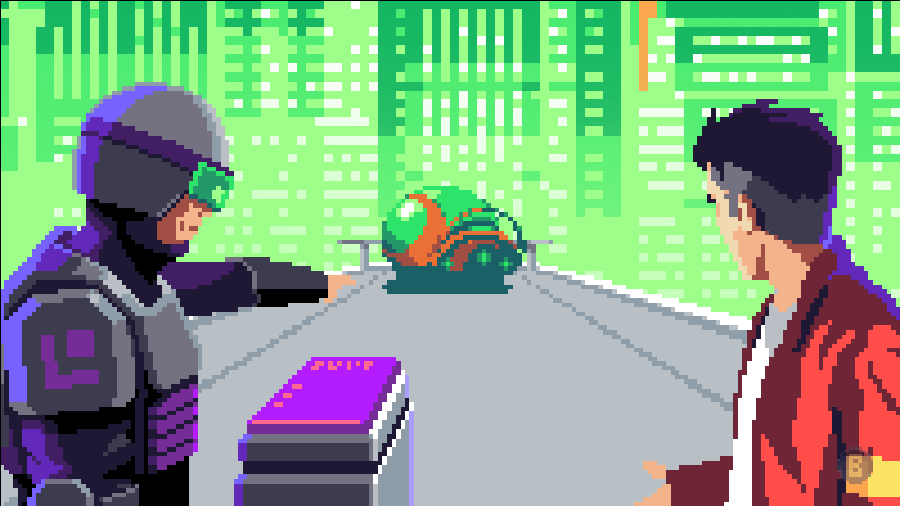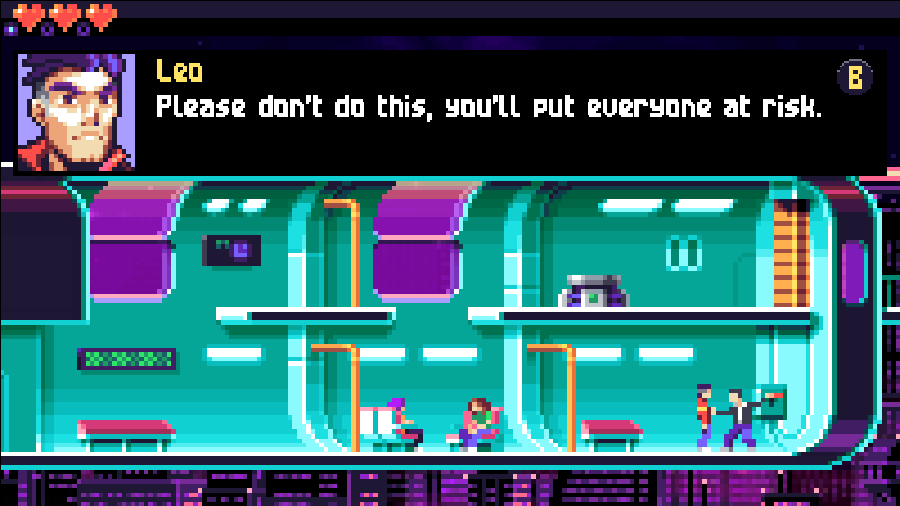LUNARK: What Is a Cinematic Platformer?
Hi! My name is Johan Vinet, a French game developer based in Canada. I’m the creator of LUNARK, a 2D cinematic platformer set in a future where Earth’s moon has been transformed into a vessel for humanity’s survival and a totalitarian regime reigns supreme. You play as Leo, a courier with unique abilities and a mysterious past, who unwittingly gets caught up in the rebellion against LUNARK’s iron fist.
But what is a “cinematic platformer”? The term first appeared in the late ’80s and early ’90s with the emergence of a new sub-genre of 2D action/platform games whose design philosophy was more oriented towards realism and borrowed some techniques previously used in movies!

Unlike more cartoony platformers like Mario or Sonic, gameplay tends to be fairly grounded in reality, with realistic character anatomy, extreme vulnerability, and interactive elements subject to the laws of physics (no coins or rings floating in the air!). The emphasis on realism also extends to character movement, with realistic jumping distances, the inability to survive long falls, and the impossibility of elements like double jumps or changing direction in mid-air. That doesn’t mean everything has to be realistic, but when it’s not, it’s usually justified by the scenario (such as an anti-gravity belt to slow down a fall, or – to name one from LUNARK – using humidity in the air to generate infinite ice ammunition.

As for the presentation, cinematic platformers tend to emphasize fluid animations with a greater number of frames, sometimes using a technique called rotoscoping, in which the pixel art is drawn over video footage of actual movements; it’s often considered the precursor to modern motion capture. Other key presentation aspects may include minimalist user interface to preserve the player’s immersion, gameplay punctuated with contextual cutscenes (for example, picking up a key object will reward you with an animated close-up of the action), and sounds and music that support the actions in a contextual way, just like in a movie. Cinematic platformers also often feature a deep narrative, which had previously been the domain of point-‘n’-click adventures and RPGs.

These elements are on full display in the great cinematic platformers of the past, all of which contributed to my love of the genre and had a hand in shaping LUNARK. Prince of Persia by Jordan Mechner (published by Brøderbund in 1989) is considered the pioneer of the genre; in addition to a relatively similar moveset, LUNARK is inspired by its single-screen/three-floors-per-screen structure, which gives enough room for either combat, platforming, or accessible puzzles. Out of This World (also known as Another World) by Eric Chahi (published by Delphine Software in 1991) is even closer to a movie experience by offering impressive cinematics and more-integrated puzzle solving than Prince of Persia. It also directly influenced the contextual cutscenes in LUNARK when, for example, you pick up an object or activate a key mechanism. Of course, no discussion of the genre would be complete without mentioning Flashback: The Quest for Identity by Paul Cuisset and his team (published by Delphine Software in 1992). In my humble opinion, it takes the best elements of Prince of Persia and Out of This World and builds upon that foundation to offer a deeper world and moveset, coupled with an ambitious and gripping scenario. Flashback is without a doubt the game that most influenced LUNARK’s creation.

With LUNARK, I wanted to honor these masterpieces while finding a sweet spot between classic gameplay and my expectations as a modern player. For example, although LUNARK is grid-based (like Flashback), I wanted the controls to feel more responsive and snappy. Although still faithful to the genre’s classics, the inputs — thanks to modern controllers — are a bit more intuitive. (And if not to your liking, they’re rebindable.) Additionally, I chose a screen resolution closer to that of a GBA than a SNES; this allowed me to save a significant amount of time when creating the visuals for the numerous rotoscoped cinematics. However, since I don’t have to worry about the constraints of putting the game on a cartridge or floppy disks, the cutscenes are more fluid, the levels are much larger, and there is more music than in the games I drew my inspiration from.

LUNARK is my tribute to a genre that opened my eyes to the possibilities of video games at a pivotal time in my life. My passion for this genre has allowed me to work with the same motivation every day and I hope it’ll show in the game. WayForward and I are very excited to be able to share the product of this dedication with you, humbly wishing that you will have a good time playing LUNARK. The game is out now, and in addition to itch.io, can be found on Switch, PS4, PS5, Xbox, and Steam.
Additional info on the history of cinematic platformers can be found here.
Get LUNARK
LUNARK
Join the revolution in this cinematic sci-fi platformer
| Status | Released |
| Authors | WayForward, Canari Games |
| Genre | Platformer, Action, Adventure |
| Tags | Atmospheric, cinematic-platformer, GameMaker, Indie, Pixel Art, Retro, rotoscope |
| Languages | German, English, Spanish; Castilian, French, Italian |
| Accessibility | Configurable controls |
More posts
- LUNARK v1.1.0 Update NotesMay 02, 2023
- LUNARK: Going UndergroundApr 25, 2023
- LUNARK: The Art of MovementApr 19, 2023
- LUNARK: City LivingApr 18, 2023

Comments
Log in with itch.io to leave a comment.
You did a great job bringing back the feeling of those old games. It was absolutely lovely and I had a hard time putting it down to go to bed. Thanks so much for releasing it here so I could have a DRM-free version.